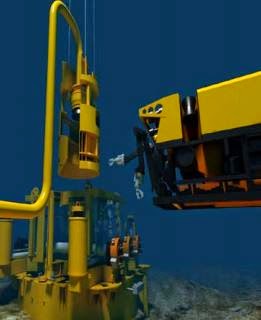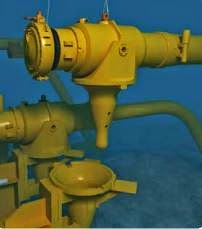Underwater welding is a process whereby metals are melted
together underwater to either repair a structure or create a new structure.
Used on oil wells, ships, and other underwater structures, underwater welding
is done by one of two methods. The first is hyperbaric welding, in which a
structure is created around the weld and a pressurized environment created. The
second is arc welding, in which the welding electrode contains a flux coating
that releases gases to preserve the integrity of the weld. Because of the
dangers of shock, explosion and poisoning, underwater welding is only performed
by professionals with both diving and welding certifications.
Hyperbaric Welding Method
- Identify the site and material of the joint to be welded as most underwater welds involve steel, but metals may vary.
- Prepare a chamber to place around the joint (each joint should have a separate chamber).
- Introduce gas into the chamber.
A typical gas mixture uses helium and oxygen, but requirements vary based on the specific joint to be welded. The pressure of the chamber should be slightly above that of the surrounding water.
- Run a power supply to the chamber and set up a port for your electrodes.
Multiple electrodes will likely be required, and should be placed in advance in front of the area of the joint to be welded.
- Dive to the weld site.
- Turn on the power supply and weld the joint from outside the chamber.
- Turn off the power supply as soon as the welding is done.
Arc Welding Method
- Investigate the joint to be welded and identify the types of metals involved.
- Prepare the adequate electrodes, plan out the order of welding and dive to the weld site.
- Weld the joint, ensuring that the flux coating of the weld is coming off as expected, and that too much hydrogen is not approaching the joint.
- Turn off the power supply as soon as the welding is done.
Source :
http://www.wikihow.com/Weld-Underwater












